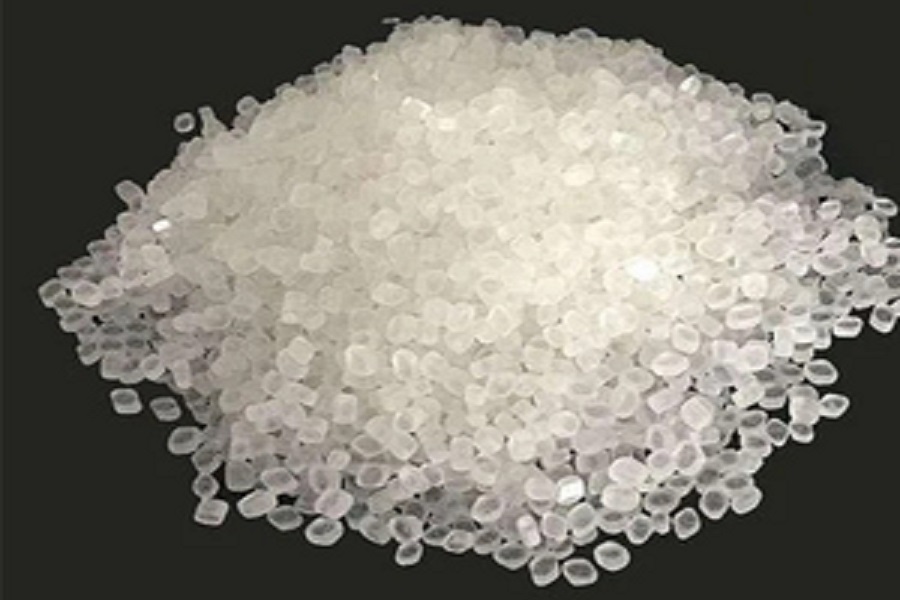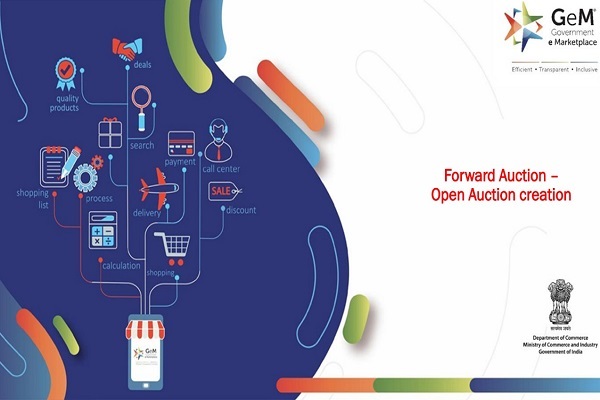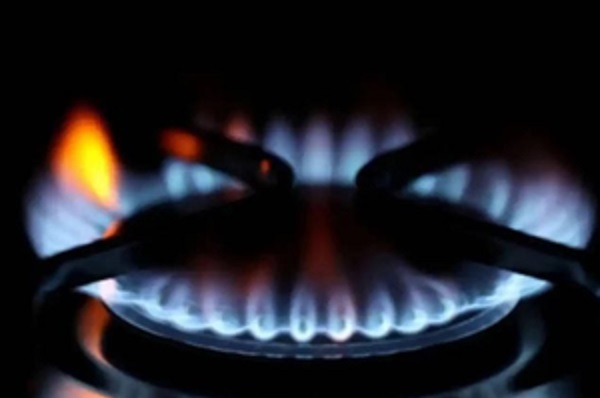Cottoncandy trading range for the day is 52960-54020 - Kedia Advisory

Gold
Gold prices edged up by 0.08% to Rs.79,626, supported by geopolitical tensions and central bank demand, but gains were capped by a risk-on sentiment fueled by optimism over U.S. President Donald Trump's proposed policies. While Trump's policies are viewed as inflationary and could prompt the Federal Reserve to maintain a hawkish stance, the market expects no immediate rate hike in the upcoming Fed meeting. Meanwhile, the European Central Bank signaled further rate cuts, which bodes well for non-yielding gold. Geopolitical tensions provided support as Israel launched a drone attack in southern Lebanon, despite the ceasefire agreement with Hamas. Additionally, gold stocks in COMEX-approved warehouses surged by a third in six weeks as traders prepared for potential import tariffs. Speculators also increased their net long positions in COMEX gold by 17,994 contracts to 212,494, highlighting positive market sentiment. Physical demand presented mixed signals, with discounts in India widening to $30 per ounce due to subdued domestic demand, while premiums in China rose to $3-$13 per ounce ahead of the Lunar New Year. Central bank purchases remained a key driver, with Poland and India adding 21 and 8 tonnes to their reserves, respectively, in November. China resumed its gold buying in December, bringing its total reserves to 73.29 million fine troy ounces. Gold witnessed short covering as open interest dropped by 10.8% to 7,861 contracts. Immediate support lies at Rs.79,375, with a break below likely to test Rs.79,130. Resistance is seen at Rs.79,765, with further upside potential to Rs.79,910.
Trading Ideas:
* Gold trading range for the day is 79130-79910.
* Gold settled flat as lack of details about US President Trump's tariff plans and easing geopolitical tensions.
* The Federal Reserve is expected to keep its benchmark interest rate unchanged at its upcoming meeting
* ECB policymakers backed further rate cuts, signaling that next week's reduction is nearly certain.
Silver
Silver prices fell by 0.86% to Rs.91,149 as the yield on the U.S. 10-year Treasury note climbed towards 6.65%, reflecting market concerns about U.S. President Trump’s policy pledges and their inflationary implications. Expansionary fiscal measures such as proposed tariffs on China, the EU, and other nations, tax cuts, and investment in AI infrastructure fueled expectations of inflationary pressures. Despite this, markets still anticipate a rate cut from the Federal Reserve in Q3 of this year. Labor market data revealed a slight increase in unemployment claims, with initial claims rising by 6,000 to 223,000 and recurring claims reaching their highest levels since November 2021, suggesting a softening but resilient job market. On the supply-demand front, ongoing global silver deficits continue to support a bullish long-term outlook. The Silver Institute projects a 4% reduction in the global silver deficit to 182 million ounces in 2024. Demand is expected to rise by 1%, led by record industrial use in sectors like electronics, solar panels, and electric vehicles, alongside a recovery in jewelry consumption. On the supply side, mine production is expected to grow by 1%, particularly in Mexico, Chile, and the U.S., with recycling contributing an additional 5%. Silver faced fresh selling pressure, with open interest rising by 5.62% to 22,323 contracts. Immediate support lies at Rs.90,390, with further downside potential to Rs.89,635. Resistance is seen at Rs.91,795, and a break above could push prices to Rs.92,445.
Trading Ideas:
* Silver trading range for the day is 89635-92445.
* Silver dropped as the yield on the 10-year US Treasury note rose toward the 6.65% mark.
* Markets continued to assess the how policy pledges by US President Trump may impact the macroeconomic backdrop.
* The number of Americans filing new applications for unemployment benefits rose marginally last week.
Crude oil
Crude oil prices fell by 1.17% to Rs.6,484 as comments from U.S. President Donald Trump about urging Saudi Arabia and other OPEC members to reduce oil prices added downward pressure. Additionally, the U.S. Energy Information Administration (EIA) raised its estimate for U.S. crude oil production in 2025 to a record 13.55 million barrels per day (bpd), up from the prior estimate of 13.52 million bpd. However, the EIA slightly revised its 2024 output forecast lower to 13.21 million bpd. Crude inventories in the U.S. increased by 1 million barrels last week, while gasoline and distillate stocks surged by 3.23 million and 1.88 million barrels, respectively, according to the American Petroleum Institute. Official EIA data showed a ninth consecutive weekly draw in crude inventories, with a decline of 1.02 million barrels, slightly below market expectations of a 2.1 million-barrel draw. Stocks at the Cushing, Oklahoma, hub fell by 150,000 barrels. Global supply is projected to outpace demand over the next two years, according to the EIA’s report. Production is forecast to reach 104.4 million bpd in 2025, while demand is expected to average 104.1 million bpd, reflecting slower-than-anticipated recovery. The Permian Basin remains a key contributor, expected to account for more than half of U.S. output by 2026. Crude oil experienced fresh selling, with open interest rising by 2.87% to 8,315 contracts. Support is placed at Rs.6,427, with further downside potential to Rs.6,369. Resistance is seen at Rs.6,561, and a break above this level could push prices to Rs.6,637.
Trading Ideas:
* Crudeoil trading range for the day is 6369-6637.
* Crude oil dropped after U.S. President Trump's said that he will ask OPEC nations to reduce oil prices.
* US crude inventories increased by 1 million barrels last week, with fuel stockpiles also surging - API
* U.S. oil production is poised to set a larger record this year than prior estimates, U.S. EIA said.
Natural gas
Natural gas prices fell by 0.74% to Rs.337.5 as a smaller-than-expected storage withdrawal of 233 billion cubic feet (bcf) for the week ending January 17th signaled weaker demand. The market had anticipated a sharper draw of 244 bcf. Despite this, U.S. utilities have recorded the tenth consecutive weekly inventory decline, bringing total storage to 2,896 bcf. Inventories are now 1.9% lower year-on-year but remain 0.7% above the five-year average. The sharpest storage drops were in the South Central (-77 bcf), Midwest (-64 bcf), and East (-56 bcf) regions due to colder weather conditions. Production in the Lower 48 states dropped to a one-year low of 97.5 billion cubic feet per day (bcfd) earlier in the week, primarily due to freeze-offs impacting oil and gas wells. However, output recovered to 99.3 bcfd on Wednesday. The EIA forecasts dry gas production to rise to 104.5 bcfd in 2025 and 107.2 bcfd in 2026, reflecting a growing supply trend. On the demand side, colder-than-normal weather through January 27th is expected to drive higher consumption in the near term. LNG exports are also forecast to increase significantly, reaching 14.1 bcfd in 2025 and 16.2 bcfd in 2026. The market saw long liquidation, with open interest dropping by 14.9% to 7,646 contracts. Natural gas has immediate support at Rs.330.8, and a break below this could test Rs.324.2 levels. Resistance is seen at Rs.346.9, and a move above this may push prices to Rs.356.4.
Trading Ideas:
* Naturalgas trading range for the day is 324.2-356.4.
* Natural gas eased as a smaller-than-expected weekly storage withdrawal, signaling weaker-than-expected demand.
* US utilities withdrew 233 billion cubic feet of natural gas from storage to 2,896 bcf.
* Inventories are 1.9% below the corresponding period of the previous year, but remain 0.7% above the ongoing five-year average.
Copper
Copper prices gained 0.19% to settle at Rs.832.75, supported by supply constraints and a surge in Chinese demand, despite caution over trade tensions and upcoming economic decisions. U.S. President Donald Trump’s proposal for a 10% tariff on Chinese imports reignited trade war fears, while Beijing expressed a willingness to maintain communication. Market sentiment remained cautious ahead of the Lunar New Year holiday, with traders also awaiting rate decisions from the Bank of Japan and the U.S. Federal Reserve. On the supply side, Chile revised its copper production forecast downward to 5.54 million tons by 2034 from 6.34 million tons. Antofagasta reported a 1% rise in production to 664,000 metric tons in 2024, below expectations due to lower grades. Meanwhile, data revealed that global refined copper consumption outpaced output in November, leading to a 131,000 metric tons deficit, up from a 30,000 metric tons deficit in October. However, for the first 11 months of the year, the market showed a 168,000 metric tons surplus, a reversal from the 89,000 metric tons deficit recorded in the same period last year. China’s imports of unwrought copper and copper products surged 17.8% year-on-year to 559,000 metric tons in December, as refiners replenished inventories amid stronger orders. The market saw short covering, with open interest dropping by 5.26% to 3,226 contracts. Copper has immediate support at Rs.828.2, and a drop below this could test Rs.823.6 levels. Resistance is seen at Rs.835.2, with a break above potentially driving prices to Rs.837.6.
Trading Ideas:
* Copper trading range for the day is 823.6-837.6.
* Copper edges higher amid trade tensions and supply concerns
* The global refined copper market showed a 131,000 metric tons deficit in November, compared with a 30,000 metric tons deficit in October.
* China's foreign ministry said Beijing was willing to maintain communication with the U.S. to "properly handle differences and expand mutually beneficial cooperation".
Zinc
Zinc prices fell by 1.6% to settle at Rs.270.75 as the global zinc market deficit narrowed to 52,900 metric tons in November from 65,400 tons in October, according to the International Lead and Zinc Study Group (ILZSG). For the first 11 months of 2024, the global market recorded a deficit of 33,000 tons, compared to a surplus of 312,000 tons in the same period in 2023. Despite this, downside pressure on prices was limited due to declining inventories in LME-registered warehouses, with total stocks at their lowest since February 2024. On the supply front, China's refined zinc production in December increased by over 1% month-on-month, with smelters in regions like Qinghai, Shaanxi, Gansu, and Inner Mongolia contributing to the rise through maintenance recovery and new production. Looking ahead to January 2025, domestic refined zinc production is expected to rise further by nearly 3% month-on-month, driven by increased output in regions such as Hunan, Guangdong, and Jiangxi. However, production cuts in some regions due to maintenance and Chinese New Year-related shutdowns may slightly offset the gains. On the demand side, China's industrial output accelerated sharply in December, supported by monetary stimulus from the People’s Bank of China, signaling improving economic activity. The market witnessed fresh selling, with open interest increasing by 4.41% to 1,421 contracts. Zinc has immediate support at Rs.269.4, and a break below could test Rs.268 levels. Resistance is seen at Rs.272.8, with a move above potentially pushing prices to Rs.274.8.
Trading Ideas:
* Zinc trading range for the day is 268-274.8.
* Zinc dropped as global zinc market deficit narrows in November fell to 52,900 metric tons.
* Trump mulls 25% duties on imports from Canada, Mexico on Feb. 1
* Trump wants to reverse the U.S. trade deficit with the EU
Aluminium
Aluminium prices fell by 1.06% to settle at Rs.252.55, weighed by rising global supply and higher inventories. Global primary aluminium output rose 3% year-on-year to 6.236 million tonnes in December, as per data from the International Aluminium Institute (IAI). Additionally, aluminium stocks at Japan's three major ports increased by 13.2% to 323,600 metric tons in December, indicating weaker demand. In China, aluminium production rose 4.2% year-on-year to 3.77 million metric tons in December, driven by new production capacity in the Xinjiang region. However, daily output in December averaged 121,612 tons, a 1.7% decrease from November. Meanwhile, the European Union is preparing to include Russian primary aluminium imports in its 16th sanctions package, further limiting Russian exports. Despite this, China’s aluminium exports grew by 17% year-on-year to 5.5 million tons in the first ten months of 2024, reflecting its dominance in the global market. However, higher production costs in China have led to average losses of 687 yuan per ton, marking the first industry-wide losses in three years. The market witnessed long liquidation, with open interest dropping by 21.99% to 1,348 contracts. Aluminium has immediate support at Rs.251.4, and a break below this level could test Rs.250.2. On the upside, resistance is seen at Rs.254, with prices potentially testing Rs.255.4 if this level is breached.
Trading Ideas:
* Aluminium trading range for the day is 250.2-255.4.
* Aluminium dropped as global primary aluminium output in December rose 3% YoY
* Aluminium stocks at three major Japanese ports rose by 13.2% by December end, from the previous month.
* The EU was set to sanction the import of primary aluminum from Russia in its upcoming package.
Cottoncandy
Cottoncandy prices fell by 0.22% to settle at Rs.53,330 per bale, pressured by bearish projections from the WASDE report. The report estimated global cotton production for 2024/25 to rise by 1.2 million bales, reaching 117.4 million bales, driven by increased output in India and Argentina. Additionally, U.S. cotton production was revised higher to 14.3 million bales. India, the world's largest cotton producer, is expected to see imports grow significantly to 25 lakh bales in 2024/25, a rise of 9.8 lakh bales compared to the previous season. However, kapas arrivals in India’s northern states have declined by 43% as of November 30, 2024, raising supply concerns. Despite higher global production, the downside in prices is limited due to strong cotton yarn demand from South Indian garment industries and robust export orders. The Cotton Association of India (CAI) has maintained its cotton pressing estimate at 302.25 lakh bales for the 2024/25 season, while consumption is pegged at 313 lakh bales. India’s closing stock is expected to drop to 26.44 lakh bales by September 2025, down from 30.19 lakh bales last year. Cottoncandy is witnessing long liquidation, with open interest dropping by 15.83% to 202 contracts. Prices are supported at Rs.53,150, with a break below potentially testing Rs.52,960. Resistance is seen at Rs.53,680, and a move above this level could lead to Rs.54,020.
Trading Ideas:
* Cottoncandy trading range for the day is 52960-54020.
* Cottoncandy declines amid higher production estimates and increased ending stocks
* India's cotton production in 2024/25 is likely to fall by 7.4% from a year ago
* Cotton production is projected to increase in China, Brazil, and Argentina, more than offsetting reductions in the US and Spain – USDA
* In Rajkot, a major spot market, the price ended at 25636.6 Rupees dropped by -0.27 percent.
Turmeric
Turmeric futures settled 2.53% lower at Rs.13,938 as harvesting commenced in Karnataka and Andhra Pradesh, with Telangana set to follow soon. Increased supply expectations with the arrival of the new crop post-Makar Sankranti added pressure to prices. However, concerns about lower rhizome growth and poor yield estimates provided some downside support. Farmers have indicated potential yield shortfalls, warranting close monitoring of harvesting progress. Supply dynamics remain tight in the Erode and Warangal regions, with significantly reduced turmeric availability. Additionally, pending deliveries in the futures market continue to influence sentiment as physical stock remains scarce. Weather conditions, worsened by El Niño, are also unfavorable for production, potentially impacting overall yield. On the production side, last year’s turmeric output was around 68-70 lakh bags against an annual domestic consumption of 128 lakh bags, leaving a wide gap that depleted old stock, which is expected to be fully exhausted before the new crop arrives in April. Turmeric exports from April to November 2024 rose by 9.8% to 121,601 tonnes compared to 110,745 tonnes during the same period in 2023. However, November exports declined 20.18% compared to October but were 48.22% higher than November 2023, indicating robust demand growth year-over-year. Turmeric futures saw fresh selling with open interest rising by 2.3% to 11,575 contracts while prices dropped by Rs.362. Support is at Rs.13,714, with a break below potentially testing Rs.13,490. Resistance is at Rs.14,254, and a move above could see prices reaching Rs.14,570.
Trading Ideas:
* Turmeric trading range for the day is 13490-14570.
* Turmeric dropped as harvesting has commenced in Karnataka and Andhra Pradesh and is expected to commence in Telangana.
* However downside seen limited amid concerns over slow growth of rhizomes and low yield estimates persist.
* With the arrival of new crop likely to increase after Makar Sankranti, supply is expected to increase.
* In Nizamabad, a major spot market, the price ended at 13970 Rupees gained by 0.1 percent.
Jeera
Jeera futures settled 0.8% lower at Rs.22,445 as demand remained subdued, and current export needs were met through available stocks. However, the downside was limited by ongoing concerns over stock shortages. Farmers are estimated to hold about 20 lakh bags of jeera, with only 3-4 lakh bags expected to be traded by the season’s end, leaving a significant carry-forward stock of approximately 16 lakh bags. India’s jeera production for 2023-24 is expected to match last year’s levels, with 8.6 lakh tonnes harvested from 11.87 lakh hectares, according to Spices Board data. This is a significant increase compared to the previous year’s production of 5.77 lakh tonnes from 9.37 lakh hectares. Indian jeera remains the cheapest globally, priced at $3,050 per tonne, drawing strong international demand, particularly from China, where cumin prices are $200-250 higher. Geopolitical tensions in the Middle East have also supported demand for Indian jeera, benefiting exporters from Gujarat. Exports rose sharply by 74.04% year-on-year during April-November 2024 to 147,006 tonnes, up from 84,467 tonnes in the same period of 2023. However, November exports dropped by 28.92% to 11,555.56 tonnes compared to October but remained 42.67% higher than November 2023, reflecting robust year-over-year demand growth. Jeera futures witnessed fresh selling with a 2.66% rise in open interest, settling at 2,313 contracts as prices declined by Rs.180. Support is seen at Rs.22,290, with a break below testing Rs.22,130. Resistance is likely at Rs.22,620, with a move above potentially reaching Rs.22,790.
Trading Ideas:
* Jeera trading range for the day is 22130-22790.
* Jeera dropped as demand is low and the current export business is being met from the available stock.
* However downside seen limited amid shortage of stocks is contributing.
* The current season is expected to have similar production levels as last year due to better crop conditions and good sowing.
* In Unjha, a major spot market, the price ended at 23285.65 Rupees dropped by -0.31 percent.
Views express by all participants are for information & academic purpose only. Kindly read disclaimer before referring below views










More News

Buy Copper Mar @ 908 SL 903 TGT 913-918. MCX - Kedia Advisory












